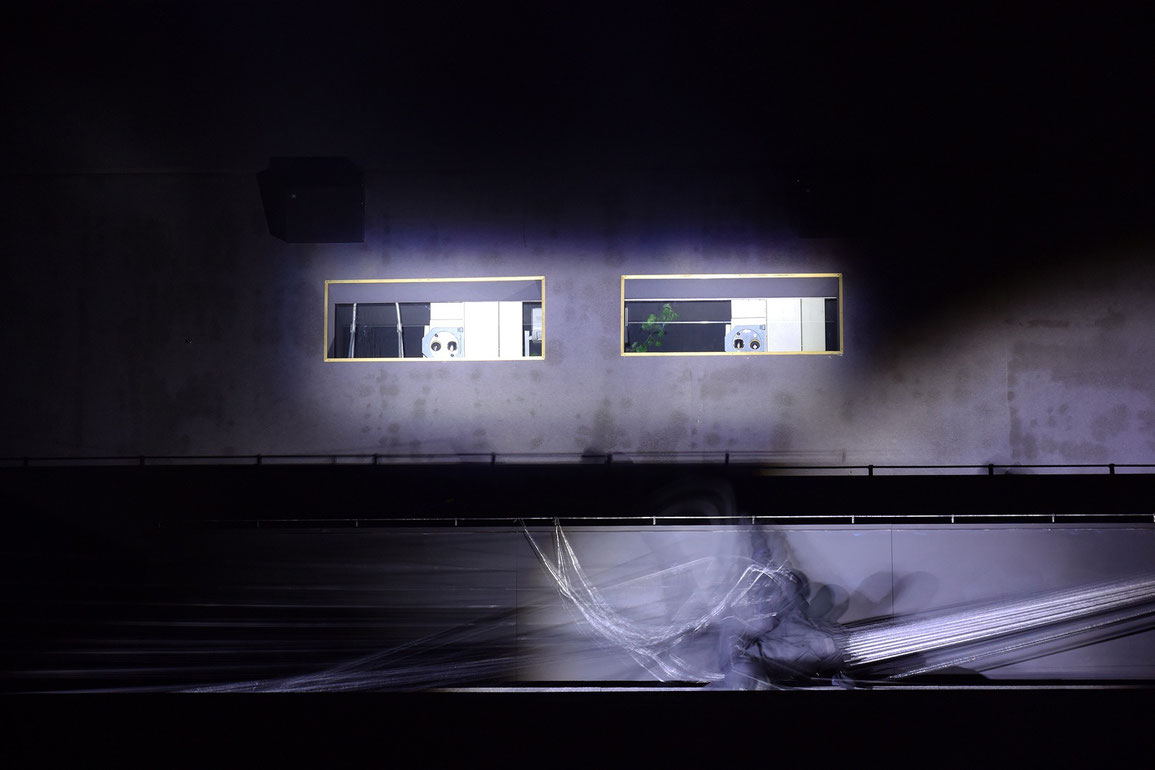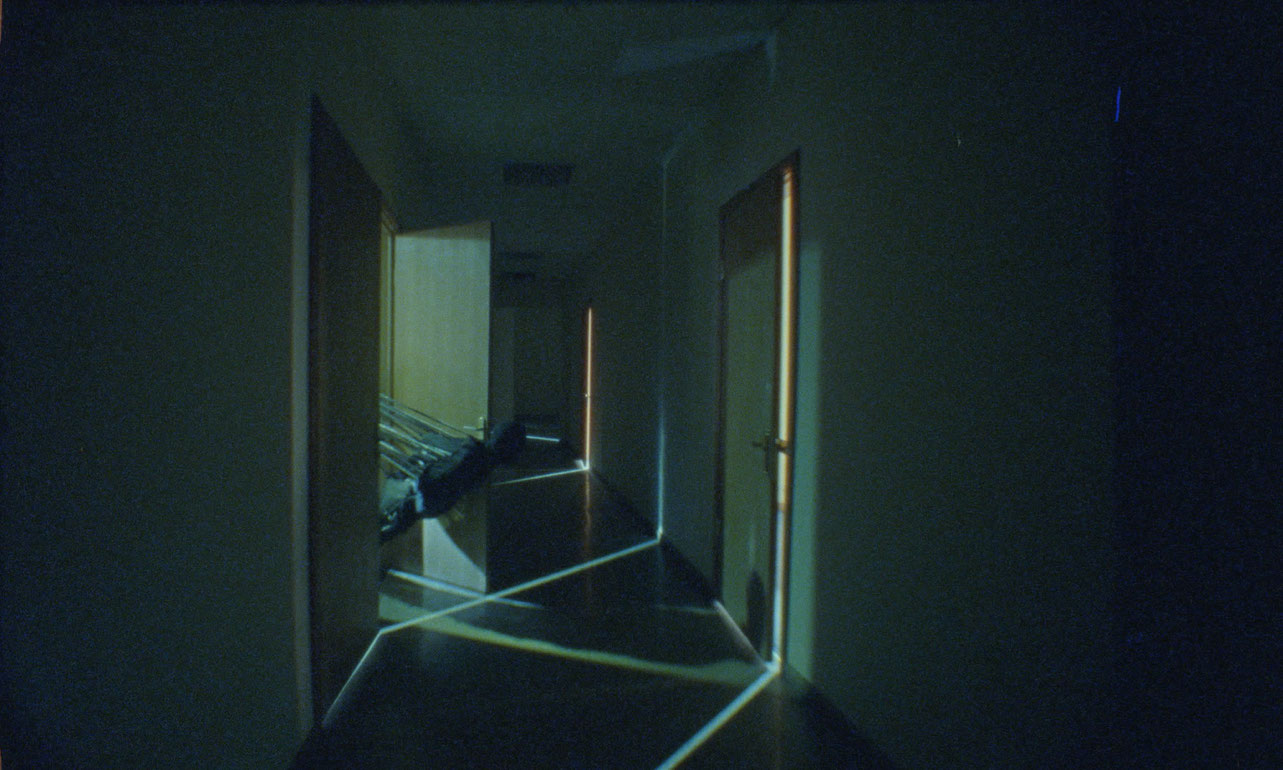Government House
The film´s title designates a luxury housing block in Moscow, built around 1930 for Stalinist officials. This is something we cannot see. Not really. But somehow, we can, because we are being shown the interior and the roof of an empty-looking building: dark stairways, rooms, corridors and halls, along with glimpses of a metropolis at night in the background. Most of all, however, this film shows vibration: it is vibration. A phantom-like figure (in the end there will be two) moves through these spaces ditheringly, attached to bright filaments reminiscent of a gigantic web. Vibration pervades everything we are being shown here – all of the house and all of the image. It all jerks in a stop-motion-like non-movement caused by changes in the lighting.
Time sculptures: that is how Jacques Aumont (using a term coined by Tarkovskij) once called the not so dissimilar "vibration films" made by Kurt Kren. Sculptural film installation, that is the field that filmmaker Herwig Weiser works in (among other things). The vibration running through the house modulates from the spatial to the temporal (as the soundscape modulates from drones to the ethereous). This transition is mediated through echoes from haunted house movies and through a projection motif: Light falls into spaces, and the threads of the web resemble rays of light; one of the giant house´s halls is a cinema. So we are reminded of our current situation, as we are sitting watching this film, in suspense like the figure suspended in the web. Remembrance, projection, putting yourself in a place: the house vibrates. It does not stand still, and the film does not stop there, with the image of a moloch-like state bureaucracy whose history it testifies to as a ruin. This house acts as memory. Therefore it is a place of gathering not just for several pasts (among them the pasts in art and film histories which Daniel Kothenschulte retraced from Haus der Regierung to Vertov and Op-Art, Polanski and Tscherkassky) – but also for intimations of a certain present and future. There may come a time in which governments are building not only fences and walls, but also houses so massive that they make us tremble. In the full sense of the word: We will see. (Drehli Robnik)
Jury Statement "SHORT RIGA Grand Prix 2018" (Award)
The international jury unanimously agreed: The award deserved to be given to this socially motivated film that uses genre styles in a very peculiar and artistic way, always avoiding cliches. For being a socially motivated abstract horror film blending together performance art with a spooky sound design and a very accurate and extreme research on the mise en scène through a hypnotic light setting, the award goes to a picture that, in our opinion, is all that an experimental film should be, really experimental.
The Grand Prix goes to Gouvernment House by Herwig Weiser.
The members of the SHORT RIGA International Jury 2018:
Per Fikse, the director of Minimalen Short Film Festival in Trondheim, Norway,
Chintis Lundgren, animator and Chintis Lundgreni Animatsioonistuudio co-founder,
Jānis Putniņš, director of the National Film School of the Latvian Academy of Culture,
Ieva Viese-Vigula, Latvian writer and film critic as well as
Enrico Vannucci, Short film advisor for the Venice and Quebec City Film Festivals.
Haus der Regierung
2018
Austria, Russia
11 min



